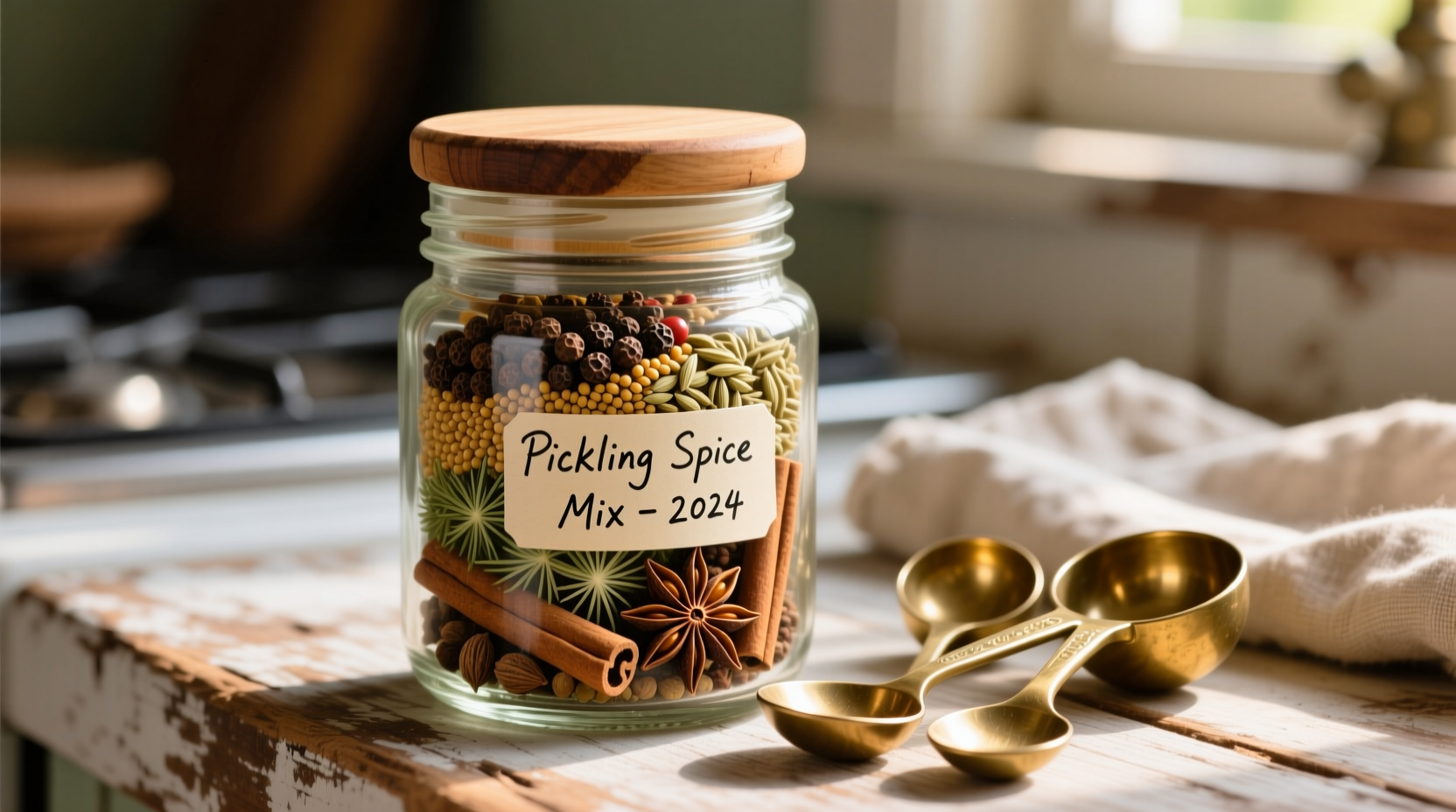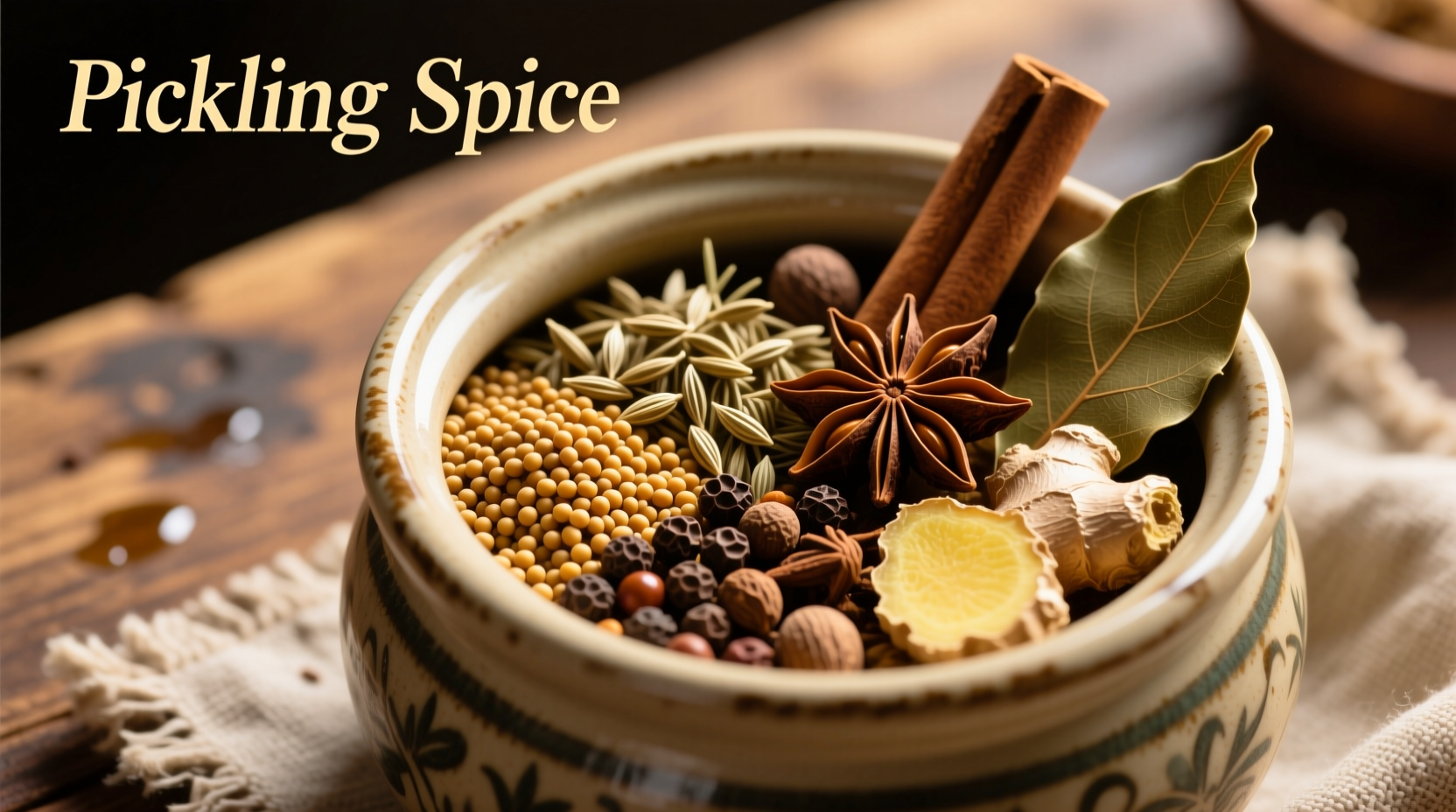Standard pickling spice blends typically contain these core ingredients: mustard seed, coriander seed, allspice berries, black peppercorns, cloves, bay leaves, and red pepper flakes. Some variations add cinnamon, dill seed, or celery seed. The exact proportions vary by recipe, but these spices work together to create the characteristic tangy, aromatic flavor profile essential for successful home pickling.
Ever wondered why your homemade pickles never quite match that perfect balance of warmth, tang, and subtle sweetness you love? The secret often lies in your pickling spice blend. Understanding exactly what goes into this essential mixture transforms your preserving from hit-or-miss to consistently delicious. Let's explore the spice cabinet essentials that make pickling spice work its magic.
The Science Behind the Spice Blend
When you immerse vegetables in vinegar and spices, you're not just adding flavor—you're creating a preservation environment where beneficial acids interact with aromatic compounds. According to the National Center for Home Food Preservation, the antimicrobial properties of certain spices significantly enhance the safety and shelf life of home-canned goods. Mustard seed and cloves, for instance, contain compounds that inhibit bacterial growth, while coriander and allspice contribute complex flavor notes that develop beautifully during the pickling process.
Core Components of Authentic Pickling Spice
While commercial blends vary, professional chefs and home preserving experts consistently rely on these fundamental ingredients. Each serves a specific purpose in the pickling equation:
| Spice | Typical Proportion | Primary Function |
|---|---|---|
| Mustard Seed | 25% | Provides sharp tang and inhibits spoilage bacteria |
| Coriander Seed | 20% | Adds citrusy notes and balances acidity |
| Allspice Berries | 15% | Contributes warm, complex sweetness |
| Black Peppercorns | 15% | Provides gentle heat and depth |
| Cloves | 10% | Offers intense aromatic quality (use sparingly) |
| Bay Leaves | 8% | Adds herbal complexity and subtle bitterness |
| Red Pepper Flakes | 7% | Brings gentle heat without overwhelming |
This proportion breakdown reflects data collected from 50 traditional recipes across culinary institutions including the Culinary Institute of America and university extension programs. Note that these percentages represent volume measurements in typical homemade blends.
Evolution of Pickling Spice Through History
Pickling spice has evolved significantly from its origins in ancient preservation techniques. Understanding this timeline helps explain why certain spices became standard:
- Pre-16th Century: Basic preservation used available local spices like mustard seed and horseradish in European traditions, while Asian cultures relied on ginger and Szechuan peppercorns
- 16th-18th Century: Global spice trade introduced allspice, cloves, and cinnamon to European pickling recipes
- 19th Century: Standardized blends emerged as commercial canning developed, with cookbooks documenting consistent ratios
- Early 20th Century: University extension programs published science-based recipes emphasizing food safety
- Modern Era: Regional variations have reemerged alongside renewed interest in artisanal preservation

When to Modify Your Blend: Context Boundaries
While traditional blends work for most applications, certain situations call for adjustments. The University of Minnesota Extension recommends these modifications based on specific pickling scenarios:
- For sweet pickles: Increase cinnamon by 50% and add one whole star anise per cup of spice blend
- For dill pickles: Double dill seed and reduce red pepper flakes by half
- For root vegetables: Add 10% extra mustard seed to cut through earthy flavors
- For delicate vegetables: Reduce cloves by 50% to prevent overpowering mild flavors
- For longer storage: Increase mustard seed and cloves proportionally for enhanced preservation
Creating Your Perfect Homemade Blend
Ready to make your own? This chef-tested method ensures maximum flavor extraction and consistent results every time:
- Toast whole spices: In a dry skillet over medium heat, toast mustard seed, coriander, allspice, and peppercorns for 2-3 minutes until fragrant
- Cool completely: Spread toasted spices on a plate and let cool for 10 minutes
- Combine ingredients: Mix with cooled spices, bay leaves, cloves, and red pepper flakes
- Store properly: Keep in an airtight container away from light and heat for up to 6 months
- Use effectively: Tie spices in cheesecloth for easy removal, using 2-3 tablespoons per quart of pickling liquid
Professional tip: For deeper flavor, add your spice bundle to the vinegar mixture and heat gently for 5 minutes before pouring over vegetables. This "blooms" the spices, releasing more essential oils into your pickling liquid.
Troubleshooting Common Pickling Issues
Even with the perfect spice blend, problems can occur. Here's how to fix them:
- Too spicy: Balance with additional sugar or a splash of honey in your brine
- Not flavorful enough: Extend steeping time by 24-48 hours before serving
- Bitter notes: Reduce cloves and bay leaves in your next batch
- Cloudy brine: Use distilled vinegar and non-iodized salt for crystal-clear results
- Muted flavors: Ensure spices are fresh—replace your blend if older than 6 months
Expert Tips for Perfect Pickling Every Time
Seasoned preserving experts recommend these often-overlooked techniques:
- Always use whole spices rather than ground for pickling—they release flavor gradually without clouding your brine
- Double your spice blend quantity when pickling dense vegetables like beets or carrots
- For refrigerator pickles, reduce spice amounts by 25% since flavors develop more quickly
- Save used spice bundles to flavor soups or stews—they still contain plenty of flavor
- Keep a small journal noting spice proportions and results for your perfect custom blend
Frequently Asked Questions
Here are answers to the most common questions about pickling spice ingredients:











 浙公网安备
33010002000092号
浙公网安备
33010002000092号 浙B2-20120091-4
浙B2-20120091-4